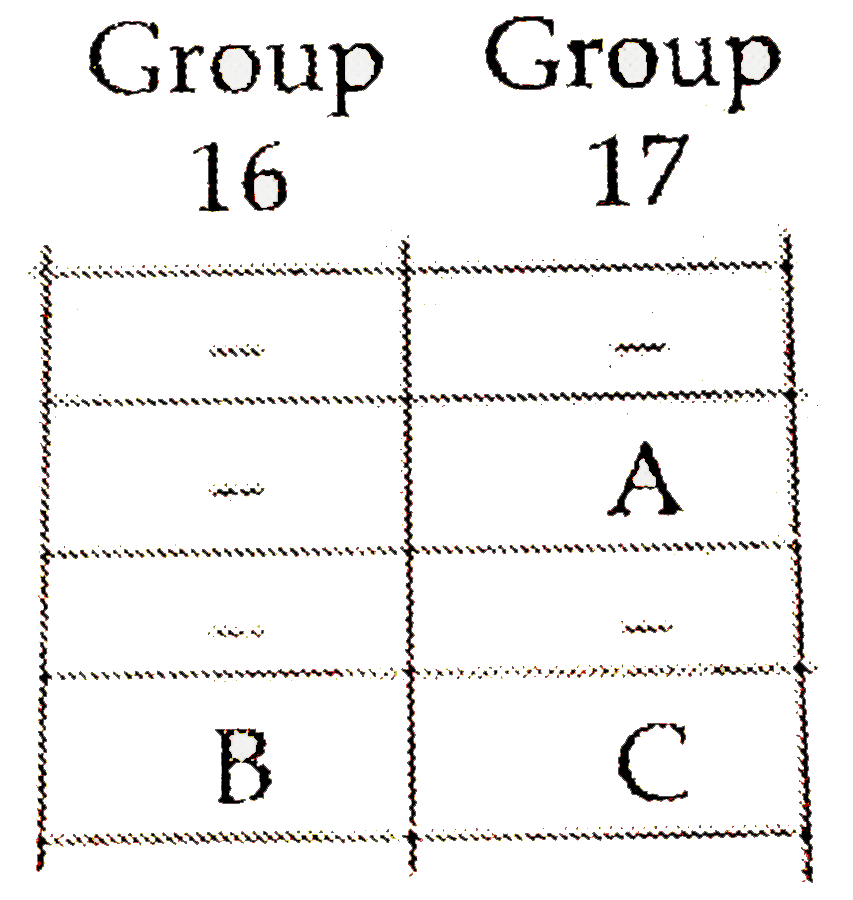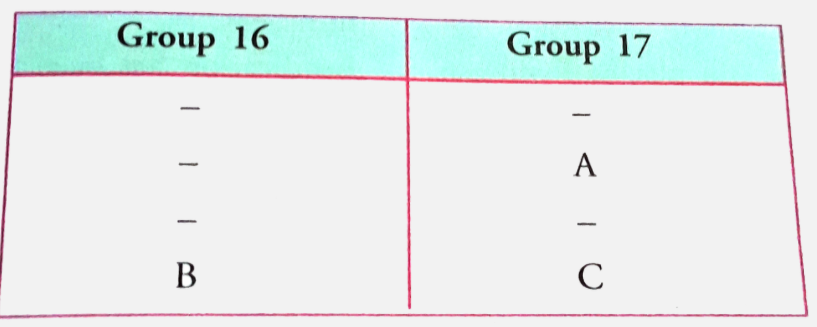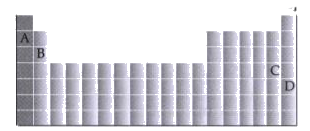The positions of three elements A,B and C in the periodic table are shown here
(a) State whether A is a metal or non-metal?

State whether C is more reactive or less reactive than A
(c) Will C be larger or smaller in size than B?
(d) Which type of ion, cation or anion, will be formed by element A?
Step by step video & image solution for The positions of three elements A,B and C in the periodic table are shown here (a) State whether A is a metal or non-metal? State whether C is more reactive or less reactive than A (c) Will C be larger or smaller in size than B? (d) Which type of ion, cation or anion, will be formed by element A? by Chemistry experts to help you in doubts & scoring excellent marks in Class 10 exams.
Updated on:21/07/2023Topper's Solved these Questions
- PERIODIC CLASSIFICATION OF ELEMENTSBOOK - LAKHMIR SINGH & MANJIT KAURCHAPTER - PERIODIC CLASSIFICATION OF ELEMENTSEXERCISE - SHORT ANSWER TYPE
8 Videos
- PERIODIC CLASSIFICATION OF ELEMENTSBOOK - LAKHMIR SINGH & MANJIT KAURCHAPTER - PERIODIC CLASSIFICATION OF ELEMENTSEXERCISE - LONG ANSWER TYPE
3 Videos
- PERIODIC CLASSIFICATION OF ELEMENTSBOOK - LAKHMIR SINGH & MANJIT KAURCHAPTER - PERIODIC CLASSIFICATION OF ELEMENTSEXERCISE - VERY SHORT ANSWER TYPE
6 Videos
- METALS AND NON-METALSBOOK - LAKHMIR SINGH & MANJIT KAURCHAPTER - METALS AND NON-METALSEXERCISE - Short Answer Type Qustions
1 Videos
- TEST PAPER 1BOOK - LAKHMIR SINGH & MANJIT KAURCHAPTER - TEST PAPER 1EXERCISE - Section B
4 Videos
Similar Questions
The position of three elements A, B and C in che periodic table are shown below :

(a) State whether A is metal or non-metal.
(b) Seate whether C is more reactive or less reactive than A.
(c) Will C be larger or smaller in size than B ?
(d) Which type of ion, cation or anion will be formed by the element A ?
View SolutionThe position of three elements A, B and C in the Periodic Table are shown below:

(a) State whether A is a metal or a non-metal.
(b) State whether C is more reactive or less reactive than A.
(c) Will C be larger or smaller in size than B?
(d) Which type of ion-cation or anion will be formed by element A?
View SolutionThe position of three elements A, B and C in the Periodic Table are shown below :
Group 16Group 17−−−A−−BC
(a) State whether A is a metal or non-metal.
(b) State whether C is more reactive or less reactive than A.
(c) Will C be larger or smaller in size than B?
(d) Which type of ion, cation or anion, will be formed by element A ?
View SolutionThe position of three elements A, B and C in the Periodic Table are shown below –
Group16Group17−−−A−−BC
(a) State whether A is a metal or non-metal.
(b) State whether C is more reactive or less reactive than A.
(c) Will C be larger or smaller in size than B?
(d) Which type of ion, cation or anion, will be formed by element A?
View SolutionThe positions of three elements P, Q and R in the periodic table are shown below

Which of these three elements is most non-metallic ?
View SolutionThe positions of three elements A, B and C in the periodic table are shown below:
Group 16Group 17−−−A−−BC
State whether C is more reactive or less reactive than A.
View SolutionThe position of three elements A, B and C in the Periodic table are shown below :

Will C be larger or smaller in size than B?
View SolutionThe positions of three elements A, B and C in the periodic table are shown below:
Group 16Group 17−−−A−−BC
State whether A is metal or non-metal.
View SolutionThe position of three elements A, B and C in the Periodic table are shown below :

Which type of ion, cation or anion, will be formed by element A?
View SolutionThe positions of four elements A, B, C and D in the modern periodic table are shown below. Which element is most likely to form an acidic oxide?

View Solution
